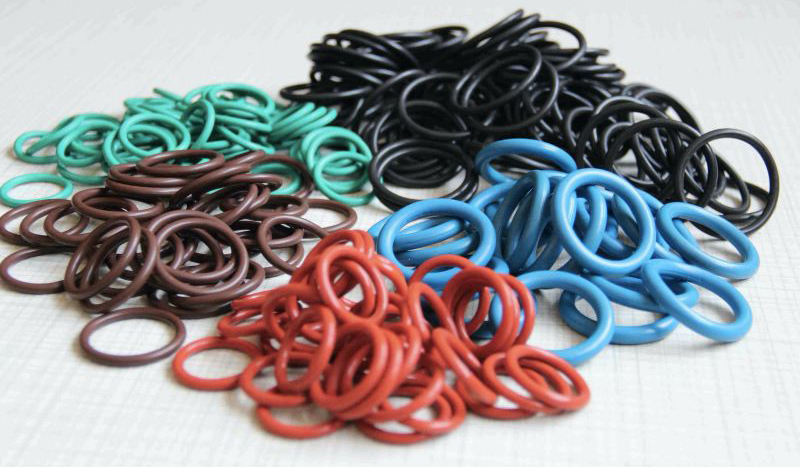In the hydraulic system, there is a seemingly ordinary small part that plays an important role, and it is the O-ring. As a compact and precise sealing element, O-rings play a vital role in the operation of hydraulic systems. This article will introduce the structure, function and application of O-ring in hydraulic system.
Structure and material of O-ring The O-ring is a seal with an annular cross-section, which is made of plastic material such as rubber or polyurethane. Its cross-sectional shape is “O”-shaped, so it is named O-ring. The shape of the O-ring is divided into three parameters: inner diameter, outer diameter and thickness. The inner diameter and outer diameter determine the installation position and sealing range of the O-ring, while the thickness determines the sealing effect of the O-ring.
The function of the O-ring The main function of the O-ring is to provide a seal, which prevents the leakage of liquid and gas in the hydraulic system. Due to the elastic properties of rubber and other materials, the O-ring can closely fit the surface of the sealing position to prevent the leakage of fluid or the penetration of media. At the same time, the O-ring also has the characteristics of wear resistance, high temperature resistance, oil resistance and corrosion resistance, so that it can maintain good sealing performance under harsh working conditions.
Application of O-rings O-rings are widely used in hydraulic systems, such as hydraulic cylinders, water gates, pneumatic equipment, automotive brake systems, etc. They are commonly used to seal connections such as plungers, valves, fittings and pipes to ensure proper operation of hydraulic systems. Applications for O-rings include industrial machinery, aerospace, marine and automotive.
Although an O-ring may seem tiny in a hydraulic system, its importance cannot be overlooked. As a compact and precise sealing element, the O-ring can ensure the normal operation of the hydraulic system and prevent the leakage of liquid and gas. Therefore, when designing and using the hydraulic system, we need to fully consider the material selection, installation and use of the O-ring to ensure the reliability and safety of the system.
O-rings are a common sealing element that are widely used in various fields, especially in mechanical engineering and fluid control. It gets its name from its cross-sectional shape resembling the letter “O”. O-rings are made of flexible materials such as rubber, silicone, polyurethane, etc. The elasticity of this material allows the O-ring to be compressed during installation and prevents the escape of liquids or gases by creating a seal between connected parts.
The following are some key features of O-rings:
Excellent sealing performance: O-rings can provide excellent sealing effect because the elasticity of the material allows it to form a tight seal on the connecting parts. This characteristic makes O-rings very effective in preventing the leakage of liquids and gases.
Strong adaptability: O-rings can be applied to connecting parts of various sizes and shapes, such as round, square, oval, etc. Due to its flexibility, it can adapt to different surfaces and provide a reliable seal.
High temperature or low temperature resistance characteristics: O-rings can work under various temperature conditions, including high temperature and low temperature environments. It is able to maintain its elasticity and sealing properties for a long time even under extreme temperature conditions.
Strong corrosion resistance: O-rings are often used in the chemical industry and liquid handling equipment because they are resistant to various chemicals, including acids, alkalis, solvents, etc.
Stainless steel support: Some o-rings also have a support structure of stainless steel or other metal material for added strength and durability. This design is typically used in high pressure and high temperature applications.
Easy to install and replace: Due to its flexibility and compressibility, O-rings can be installed on connecting parts with relative ease. It is also easy to remove and install a new O-ring in the same place when replacement is required.
All in all, O-rings are a critical sealing element that are used in a variety of applications. They provide reliable sealing performance, strong adaptability, and have the advantages of high temperature resistance and corrosion resistance. When purchasing and using O-rings, it is necessary to select the appropriate material and size according to specific needs to ensure its best performance.
Post time: Aug-20-2023








